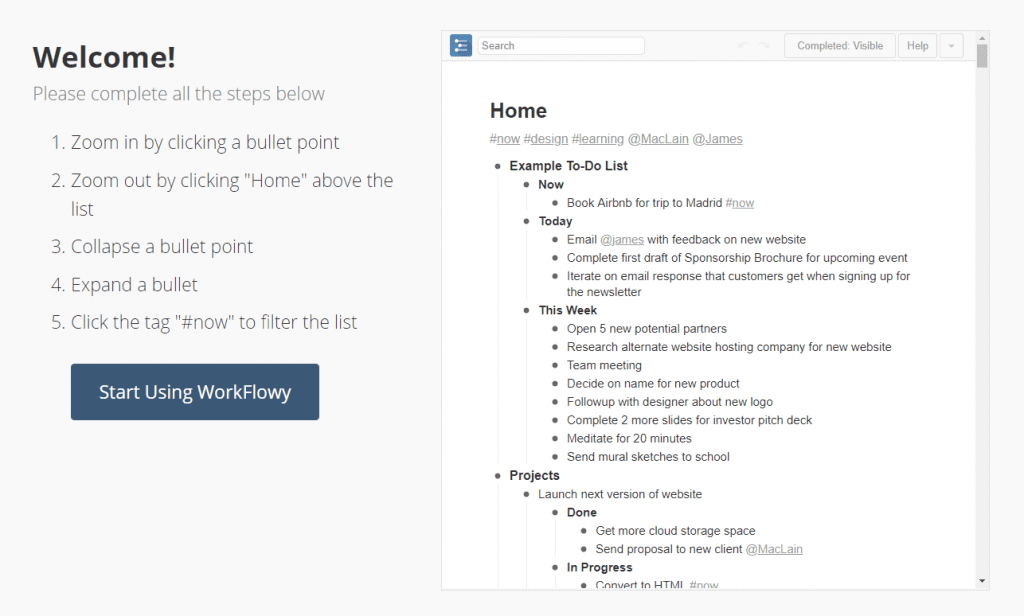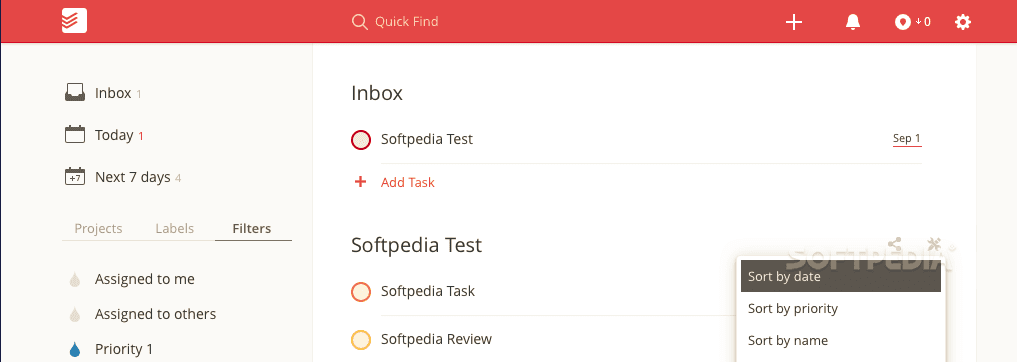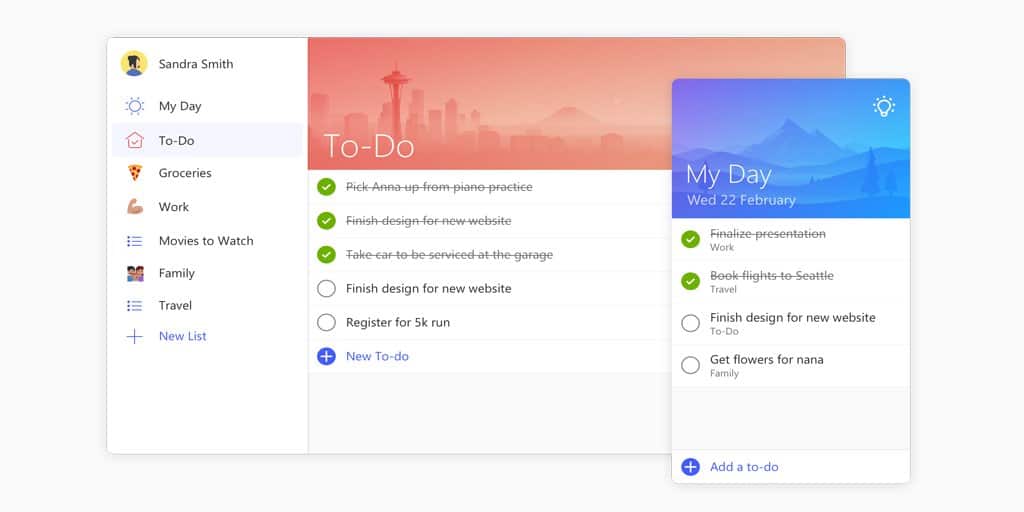
How to select the right checklist software
Estimated reading time: 35 minutes
It’s clear that checklists can reduce complexity and help us to avoid stupid mistakes. One of the things that keep us from using checklists more often is the time it takes to make, share and manage them. This is about how to select the right checklist software for the job.
Table of contents
Looking for something else? See these related links:
Checklists can be used both for grocery shopping and for the production of your company’s annual report. Checklists can be very valuable in making what is complex easier to execute. The tools you need for the two jobs are very different, of course. In the first case, you just need a pen and paper. In the second you will need checklist software. So when do you go from paper to software? And which software or app do you use when you go from simple to advanced use of checklists? This article covers four situations and lists the checklist software that fit each.
The four types of tasks
Selecting checklist software is essentially about how complex the tasks are if they must be repeated and the number of people that must collaborate to complete the list. Here are the four main task types:
- Simple tasks that are done once
- Simple tasks that are repeatable
- Complex tasks that require collaboration
- Complex tasks that require collaboration and are repeated.
1. Simple tasks that are done once
For one-off tasks that you do alone your choice of tool is simple: Write that Post-It note or shopping list. Some put it in their calendars (Outlook and Google have built-in to-do lists).
This is the type of checklist that we all know. It prevents us from forgetting a few items on our shopping list, or some to-dos during the day. No need to complicate it. If you prefer to use your phone, rather than a piece of paper, then Workflowy is a great and free checklist app.
Workflowy

+ Good to keep track of your personal to-dos. If you want to remember your shopping list, your packing list, ideas, to do of the day, etc. Just add a task and a date.
+ Simple to use.
– No priority rankings or labelling.
– Scheduling of repeating tasks in not available.
So what happens when these simple tasks should be repeated?
2. Simple tasks that are repeatable
When checklists should be repeated then paper stops being practical. Who wants to write the same shopping list every week? This is where Todoist can be a useful choice of checklist software:
Todoist

+ You can collaborate on small projects with labels and priorities.
+ It tracks your activity level and gives you “karma points” so you can keep yourself off the couch.
+ Make tasks repeatable by adding e.g. “Every Friday at 8 am”.
– Unclear what to put here and what to put in your project management tool.
– Not suitable for adding instructions.
So what about tasks that are so complex that they require instructions and dialogue?
3. Complex tasks that require collaboration
The tasks that fall into this category are almost small projects. When the task requires instructions and dialogue then which are the simplest checklist software tools that support this?
Does your company already have a simple project management system? then I would use this. If your system is made for larger projects then you may consider Asana, Trello or Microsoft To Do.
By the way, this is not a comparison of project management systems – I’m merely looking at features for creating and communicating checklists. It just happens that project management tools are made for complex collaboration.
Asana

+ Great dashboards and progress tracking.
+ Good email integration.
+ You can follow tasks.
+ Hard to collaborate with outsiders (you need a new workspace).
– The mobile app is not on par with its competitors.
– Too hard to find checklists among all the other stuff.
Trello

+ Kanban style interface makes it easy to see the progress of tasks.
+ Invite outsider team members and create public boards.
+ Each story can have a checklist.
– Cards/tasks are limited to one Board or Project.
Microsoft To Do

+ Focused on tasks.
+ You can also share lists with co-workers, friends, or family.
+ Microsoft integrations.
+ Great support.
– No priority rankings.
– Scheduling of to do’s is possible, but not its strongest feature.
– Not good for large teams, more for individual task tracking.
If you were used to Wunderlist don’t be sad. Microsoft purchased Wunderlist in 2015 and even though the app is now shut-down, Microsoft To Do is very similar to Wunderlist.
So which of the three should you choose? If we’re only talking checklists then I think Microsoft To Do is the simplest tool for this scenario.
But what happens when we’re talking about complex tasks that are repeatable?
4. Complex tasks that require collaboration and must be repeated
In my previous post “4 myths about checklists” I referred to the book “The Checklist Manifesto” and how we make stupid mistakes because we fail to apply the knowledge we have correctly.
Most of the examples that Atul Gawande uses are complex tasks that require collaboration in a specific sequence – and where they must learn from each repetition. Making complex knowledge actionable is the essence of a checklist. So we don’t get to avoid this complexity if we want to reap the real benefits of checklists.
Repetition changes the game
Examples of complex, repeatable tasks are everywhere: the daily routine in a restaurant, at a hospital, or at a construction site. In all these cases repetition is the key. To illustrate why try to imagine if each workday in a restaurant, an operating room or a construction site was done by new people. If there was no connection to what happened the day before. What would happen? Each task would be completed differently and lots of mistakes would be made. For the employee, the situation would be new, so it would be hard to blame him or her. The customer, however, would expect that the learning from all the days that came before would be applied in this case.
“Repetition makes reputation and reputation makes customers.” Elizabeth Arden
Many complex tasks are treated as projects although they are not. Let’s quickly revisit the definition of a project:
“A project is a temporary endeavor undertaken to create a unique product, service, or result.”
The Project management Institute
With this definition, how many tasks are truly unique?
- Building a house?
- Performing an operation?
- Onboarding a customer?
- Delivering a solution (that we have done before)?
My point is that many complex tasks are treated as projects when they, in fact, are processes consisting of repeatable tasks. If you treat repeatable tasks as projects, then you don’t organise to learn from case to case. You don’t get the value from repetition. If every case is considered to be unique and done by different people that you will not learn and are bound to repeat mistakes. This is why repetition changes the game when it comes to checklists as tools for applying knowledge.
This means that if we use project management tools as checklist software, then we are not set up to learn from repetition. For advanced checklists, we need checklist software that is quite different from the simpler scenarios that I talked about earlier.
Here are some examples of features to consider when selecting the appropriate checklist software for your needs:
When it comes to choosing the right checklist software for your specific requirements, it’s essential to consider various features that can enhance your checklist management. Below, we’ve outlined some key features to keep in mind during your selection process. Let’s explore two samples of key features below:

Monitor task completion
Task log documents show if tasks are done in time, too late or not done.

Shared task calendars
Filter to create custom task calendars for roles, departments or standards.
Nine success factors for checklist software
So, if checklists are not about remembering one-off tasks but about carrying forward what we have learned, then what does our checklist software need to do?
1. Tasks are done by connecting with roles, not individuals.
If a restaurant says that Peter must do this every day, then success will be tied to Peter and guests will suffer when he is not there. So it’s about what the Waiter as a role must do.
2. Visual work instructions are close to tasks.
Performing a complex task requires guides and instructions that are available right when the task is due. E.g. the service of the advance coffee maker in the restaurant is not done if the waiter doesn’t know how to run it. Tools and instructions will be different by task so this increases complexity.
3. The task sequence is clear.
If the waiter has a specific sequence for opening, then tasks must show in this sequence. Also, if waiters first need to complete their tasks before the hostess can welcome guests, then this must also be clear.
4. Tasks are repeatable automatically
Once you set up a task then it should automatically be repeated for the period you decide. You should also be able to pause tasks, rather than having to delete them (and their history).
5. Tasks are shown at the right time.
If the chef needs to quality assure the new deliveries every morning, then tasks should show and expire at this time only.
6. It is clear who does what.
If the chef does part of the quality control and the kitchen hand the rest, then tasks and instructions must be clearly separated.
7. Task performance is transparent.
History must be captured for reporting but also for learning. E.g. the restaurant manager must be able to see which percentage of tasks that are not done on time – by role and area.
8. It is easy to capture learnings.
As ideas and issues come up, then they must be captured in relation to the task and retrievable later. Only in this way can checklists improve when more people are working with them.
9. Everything is connected and easy to change.
All of this you can do with a calendar and email. However, you would need a dedicated person coordinating each complex tasks. That’s too much overhead so your tool must manage that roles, staff, tasks and learnings are synchronised automatically.
Recommendation: When choosing checklist software for your organization, prioritize solutions that align with the nine success factors mentioned above. This will help ensure that your checklist management system is efficient, transparent, and adaptable to your specific needs, ultimately leading to improved task execution and organizational performance.
Gluu Execute

+ Focused on tasks in processes.
+ Easy to add instructions to tasks.
+ Tasks are connected to roles.
– Tasks are only recurring by the calendar (not event-driven, yet).
When it comes to processes that people collaborate to complete, then you need simple process tools such as Gluu. It’s both process and checklist software. I have created a quick comparison based on the success factors:
| Success factor |
Workflowy |
Todoist |
Asana |
Trello |
Microsoft To-Do |
Gluu |
| Tasks must be done by roles | – | – | – | – | – | ✔ |
| Visual work instructions must be close to tasks | ✔ | – | ✔ | ✔ | ✔ | ✔ |
| Task sequence must be clear | ✔ | ✔ | ✔ | ✔ | ✔ | ✔ |
| Task is automatically repeatable | – | ✔ | – | – | – | ✔ |
| Tasks must show – and expire – at the right time | ✔ | ✔ | – | – | – | ✔ |
| It must be clear which role does what | – | – | – | – | – | ✔ |
| Task performance must be transparent over time | – | – | – | – | – | ✔ |
| It must be easy to capture learnings | – | – | – | – | – | ✔ |
| Everything must be connected and easy to change | – | – | – | – | – | ✔ |
Important disclosure: You’re on the Gluu blog so I’m of course not entirely unbiased. To be fair, I want to make it clear that it is only in the last scenario that Gluu wins. Also, if you’re looking for a project management tool than any of the tools above are much more suitable.
“The volume and complexity of what we know has exceeded our individual ability to deliver its benefits correctly, safely, or reliably.” Atul Gawande
This is difficult to achieve. Not because we don’t have the knowledge but because it’s too hard to apply correctly in every case. This requires the right checklist software.
So if we truly don’t want to fail because of ineptitude, then we need to embrace the complexity with the help of software. This way tomorrow more of us can do what only a few of us can do today. And do it right. Every time. With a minimum level of effort. This is exactly why we created Gluu.
Conclusions
Selecting the right checklist software is a crucial decision that depends on the complexity of your tasks, the need for repetition, and collaboration requirements. This article has outlined four main types of tasks and recommended checklist software for each scenario. It emphasizes the importance of choosing software that aligns with your specific needs, whether it’s for simple one-off tasks or complex, repeatable processes. The nine success factors for checklist software have also been highlighted, underscoring the significance of role-based task management, clear work instructions, task transparency, and easy adaptability. Ultimately, the right checklist software can help organizations harness the power of repetition and ensure that knowledge is applied correctly and reliably in every case, minimizing the risk of mistakes and inefficiencies.
Frequently Asked Questions
When selecting checklist software, consider the complexity of your tasks, the need for task repetition, collaboration requirements, clarity of task sequences, and the ability to capture and apply learnings. It’s essential to choose software that aligns with your specific needs and supports role-based task management.
For simple, one-off tasks, using pen and paper or digital note-taking tools like Workflowy can be sufficient. Checklist software becomes more critical when tasks are repeatable or require collaboration and clear work instructions.
Checklist software such as Gluu is valuable for complex, repeatable tasks because it ensures task transparency, easy role-based task assignment, automatic task repetition, and the ability to capture learnings. It simplifies collaboration and process management, making it easier to apply knowledge consistently and reliably.
This post was originally published on December 16, 2016, and revised on Dec 15, 2020.



